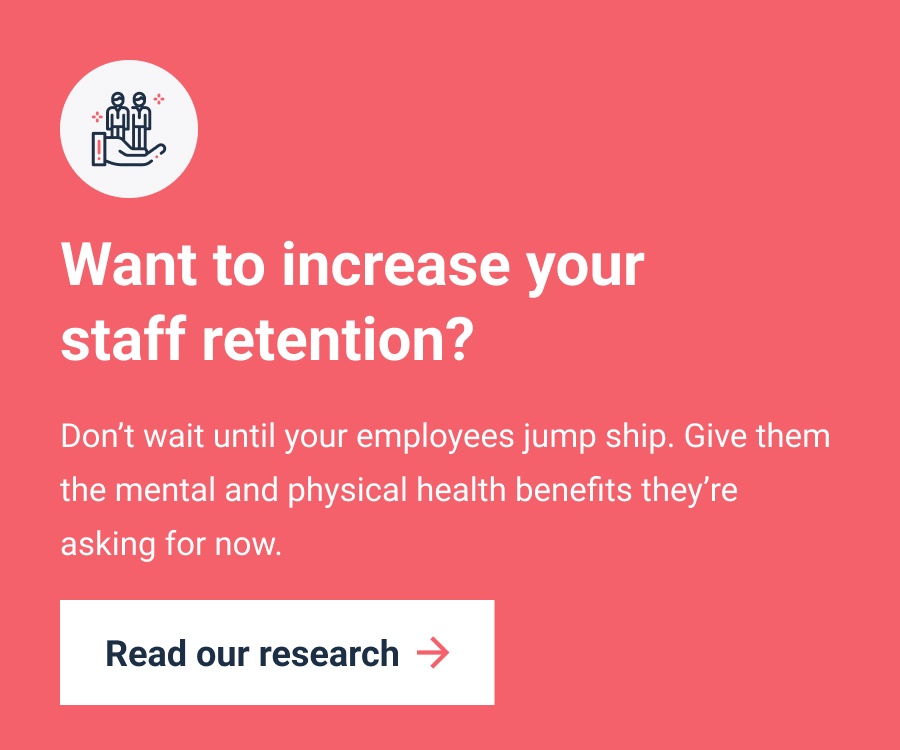To say work changed over the past few years oversimplifies what companies and staff endured. A seismic shift happened. It altered people, companies, and the way we work.
What defines a generation of hybrid workers?
For 40 percent of companies, the dust kicked up by the pandemic settled around a hybrid work arrangement. One study put the count at more than 8 out of 10 workers planning to trade fully remote work for a hybrid style.
And the Great Resignation demonstrated a shift in priorities for workers. Now, 53 percent of workers would prioritise their well-being over work. Ninety-six percent of talent professionals would agree employee experience is increasingly important.
With flexible work arrangements in a climate that prioritises care and support, how do you ensure hybrid workers feel cared for?
The key to connection in a hybrid work culture: the line manager
Microsoft paid special attention to how connected employees felt in remote setups starting in 2020. They ‘uncovered three decisive factors that impacted employees’ feelings of team connection: receiving prioritisation support from managers, feeling productive, and maintaining work-life balance—all of which managers heavily influence.’
The most consistent element of a hybrid worker’s professional life, beyond their device, is their line manager. Managers are in a privileged position to foster an environment where hybrid workers feel supported.
Our research shows that 26 percent of employees say their company gives good support but could do better. So, what can a company do to empower its line managers to offer more?
Communicate and reinforce why flexibility, autonomy and choice matter
About 30 percent of workers say they would switch jobs if their company returned to being in the office full time. The promise of a flexible work arrangement matters to workers.
The promise gets broken when guidelines morph toward rigid rules under a line manager. This might manifest as predetermined days in office versus home for employees.
Two ways to reinforce the flexibility of hybrid is to encourage line managers to:
- Adopt core working hours. Autonomy and flexibility mean letting employees decide where they work and when. They choose hours to fit their role and agree hours when they can be reached.
- Measure by results. To avoid falling back into presenteeism, managers need to shift their mindset to evaluate performance by results, not hours present online or in office.
A hybrid arrangement only works if managers trust workers to operate according to the setup. This trust must run from top to bottom so that line managers experience the same culture of trust from their senior leaders that’s they’re expected to embody.
Use tech to maintain human connection
Managers have to learn the difference between over communication and overkill. Triggering Zoom fatigue and micromanaging will only serve to demotivate hybrid workers. So, what does real connection look like online?
- Fair and open communication. Help managers keep communication accessible for all no matter the mode or hours of work. This may look like real-time collaboration tools or the facilities to host hybrid meetings with tech-enabled meeting rooms.
- Engage during online meetings. For scheduled meetings, managers should allow time on the front or back to create conversation. It’s up them to make it an organic part of the meeting rather than compulsory.
- Intentional contact and check ins. The one-on-one of the in-office world can still occur with employees using tech. Train managers to be intentional about connection, mentorship and wellbeing alongside performance and development.
- Encourage informal modes of communication. Modes like chat platforms encourage conversation between employees and can build relationships. Both one-on-one exchanges and team chats allow casual connection to occur.
Empower managers to pay attention to how tech affects the culture and connection on their team. Managers need the right tech to keep in touch with employees. But tech alone won’t build connection. Managers need to encourage and set by example in how to use it too.
Emphasise benefits and tools for the whole hybrid worker’s health
You need to train and develop managers who:
Know company benefits. HR hustles to put together benefits that promote a positive employee experience and support (and retain) talent. Ensure managers are versed in all offerings and regularly share with employees.
Share helpful tools. One in 4 UK workers live with a mental health condition. Let managers share tools like Symbio that boast holistic care for employees by offering GP consultations and counselling as well as helpful, personalised content.
Line managers should act as confident messengers to communicate that the wellbeing of their team is a primary concern of the company. And they should have a clear line of communication back to HR for feedback from their teams.
Introduce new ways of working from the top down
The work style and priorities of leaders can differ greatly from the teams they manage. A survey by Slack showed 75 percent of remote executives wanted to return to in-office three to five days a week. Only 34 percent of employees shared that desire.
But hybrid work requires hybrid leadership. A line manager absent from chats or refusing to work from home changes the employee experience. You need line managers leading the charge, and leading it well, when it comes to hybrid work.
Author Linda Gratton wrote about the opportunity to redesign work in a post-pandemic world. She offered an example where leadership participated in sessions to plan how work would look.
That business positioned managers as the thought leaders behind the return to work. This encouraged leadership buy-in to the use of the tech and practices that help hybrid work for staff.
The hybrid work environment: a creative opportunity
An Oxford study showed happy employees were 13 percent more productive. So, figuring out how to make a happy hybrid arrangement suits both staff and company.
It comes down to creating a culture. Give managers permission to lean into the new environment, be creative and to take advantage of what technology can do for their teams.
The workplace will always require wisdom and creativity that acknowledges its people and the times in which they work.
To talk more about how to empower line managers to support their hybrid workers, reach out to us or read more about the modern worker.






